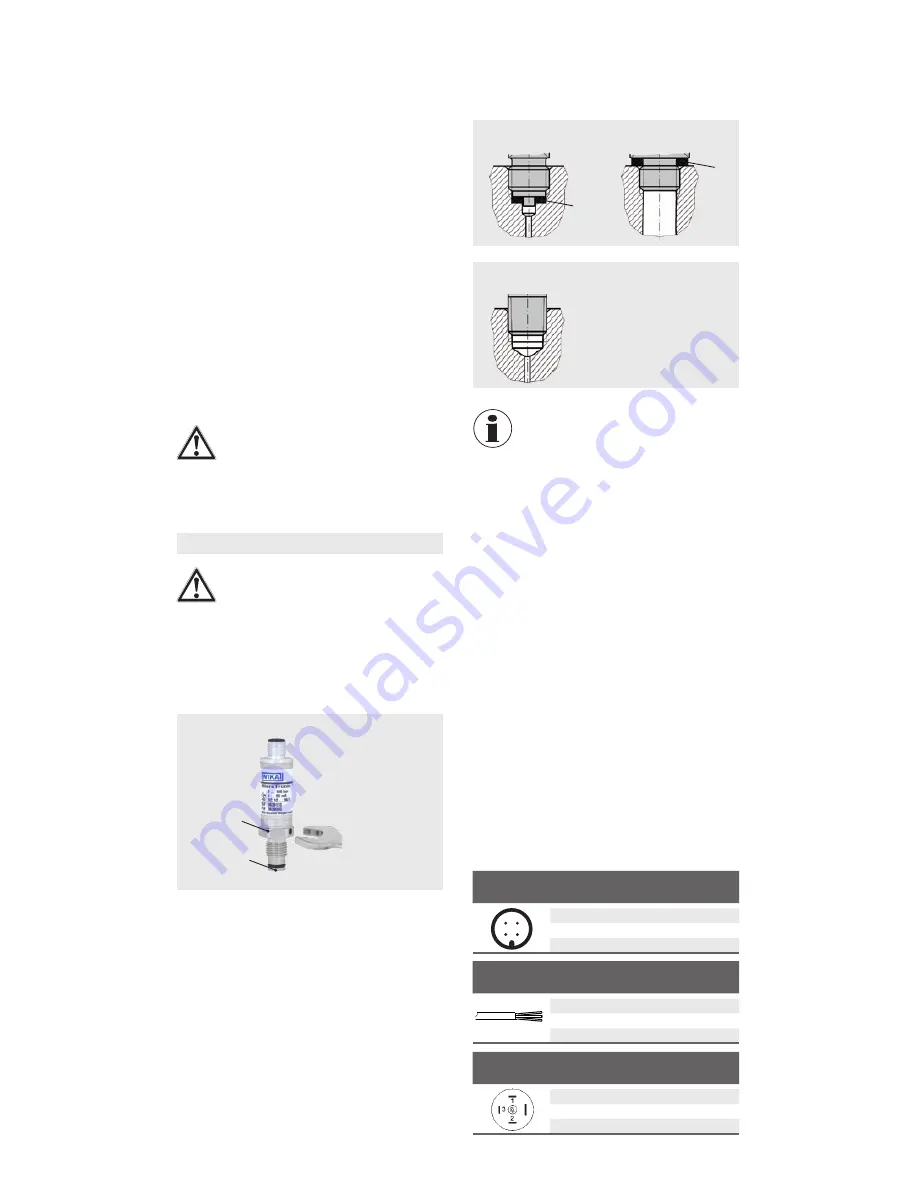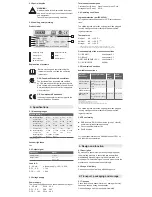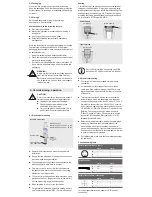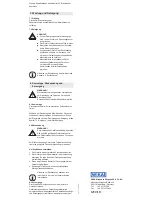
Circular connector M12 x 1 (4-pin)
2-wire
3-wire
U
B
1
1
0V
3
3
S
+
-
4
Cable outlet, 2 m
2-wire
3-wire
U
B
brown
brown
0V
green
green
S
+
-
white
4
3
1
2
Angular connector DIN 175301-803 C
2-wire
3-wire
U
B
1
1
0V
2
2
S
+
-
3
5.2 Packaging
Do not remove packaging until just before mounting.
Keep the packaging as it will provide optimum protection
during transport (e.g. change in installation site, sending
for repair).
5.3 Storage
Permissible conditions at the place of storage:
see chapter 3 "Specifications"
Avoid exposure to the following factors:
■
Proximity to hot objects
■
Mechanical vibration, mechanical shock (putting it
down hard)
■
Soot, vapour, dust and corrosive gases
■
Potentially explosive environments, flammable
atmospheres
Store the instrument in its original packaging in a location
that fulfils the conditions listed above. If the original
packaging is not available, pack and store the instrument
as described below:
1. Wrap the instrument in an antistatic plastic film.
2.
Place the instrument, along with the shock-absorbent
material, in the packaging.
3. If stored for a prolonged period of time (more than 30
days), place a bag containing a desiccant inside the
packaging.
WARNING!
Before storing the instrument (following opera-
tion), remove any residual media. This is of
particular importance if the medium is hazard-
ous to health, e.g. caustic, toxic, carcinogenic,
radioactive, etc.
6. Commissioning, operation
CAUTION!
Prior to commissioning, the pressure transmit-
ter must be subjected to a visual inspection.
■
Leaking fluid is indicative of damage.
■
Check the diaphragm of the process
connection for any damage.
■
Only use the pressure transmitter if it is in
perfect condition with respect to safety.
6.1 Mechanical mounting
Spanner flats
Flush diaphragm
(only model M-11)
Sealing
Correct sealing of the process connections with parallel
threads at the sealing face
must be made using suita-
ble flat gaskets, sealing rings or WIKA profile sealings. The
sealing of tapered threads (e.g. NPT threads) is made by
providing the thread with additional sealing material such
as, for example, PTFE tape (EN 837-2).
For further information on sealings see WIKA
data sheet AC 09.08 or under www.wika.com.
6.2 Electrical mounting
■
The instrument must be grounded via the process
connection!
■
For instruments with voltage output, use shielded
cable, and, if the cables are longer than 30 m or they
leave the building, earth the shield at least at one end
of the cable.
■
This is protection class 3 equipment for connection
at low voltages, which are separated from the power
supply or voltage by greater than AC 50 V or DC 120 V.
Preferably, a connection to an SELV or PELV circuit is
recommended; alternatively protective measures from
HD 60346-4-41 (DIN VDE 0100-410). Option for North
America: The connection can be made in line with
"Class 2 Circuits" or "Class 2 Power Units" in accord
-
ance with CEC (Canadian Electrical Code) or NEC
(National Electrical Code).
■
Select a cable diameter that matches the cable gland
of the plug. Make sure that the cable gland of the
mounted plug has a tight fit and that the seals are
present and undamaged. Tighten the threaded connec-
tion and check that the seal is correctly seated, in order
to ensure the ingress protection.
■
For cable outlets, make sure that no moisture enters at
the cable end.
■
Remove the protection cap not until shortly before
installation.
■
Ensure that the diaphragm of the process connection
is not damaged during installation.
■
The sealing faces at the pressure transmitter and the
measuring point always have to be clean.
■
Only ever screw in, or unscrew, the instrument via
the spanner flats. Never use the case or the cooling
element as a working surface.
■
The correct torque depends on the dimensions of the
process connection, the gasket used (form/material)
and the measuring range (see illustration).
■
When screwing in, do not cross the threads.
■
For information on tapped holes and welding sockets,
see Technical information IN 00.14 at www.wika.com.
Connection diagrams
For further specifications see chapter 3.5 "Electrical
connection"
Maximum torque
Measuring range ≤ 40 bar: 10 Nm
Measuring range > 40 bar: 20 Nm
Example, model M-11
Parallel thread
Tapered thread
per EN 837
per DIN 3852-E
NPT, R and PT


























